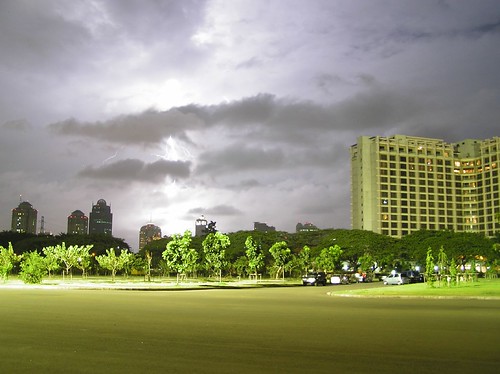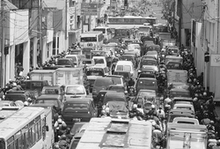This blog in the GPEIG Newsletter

amazing, originally uploaded by BESTPHOTO.
GPEIG stands for Global Planning Educators Interest Group and is an interest group under the ACSP (Association of Collegiate Schools of Planning). The mission of GPEIG is to foster global perspective in planning education and research. This link provides more information about GPEIG.
Following is the story about this blog in the GPEIG newsletter that can also be found in this link.
I am honored to share my blog of Indonesia’s Urban Studies with the readers of
the GPEIG newsletter. The blog, located at http://indonesiaurbanstudies.blogspot.com/ was created in January 2007. As mentioned in the first post of my blog, the purpose of this blog is to contribute to the advancement of urban studies and planning in Indonesia, and was inspired by the success of Randall Crane’s blog of Urban Planning Research.
My blog includes a wide-ranging collection of reflections and essays about urban issues in Indonesia, including poverty, informal sector, transportation, land uses, spatial planning, urban primacy and global warming. My reflections are primarily focused on the current urban issues in Jakarta and are based on my regular reading of two Indonesian newspapers, Kompas and The Jakarta Post. Most news stories in both newspapers are about Jakarta, and a few stories are about other cities in Indonesia. That’s why my blog posts are mainly about Jakarta.
Several urban issues in Jakarta are discussed in my blog, including the banning of
motorcyclists from Jakarta’s main roads, extortion by thugs of street vendors, an upscale neighborhood’s resistance against a new busway corridor plan, the Jakarta City Council’s rejection of a plan of converting gas stations into green areas and the change of the school start time. The blog also includes the reflections of the last three years of annual floods that inundated Jakarta. Interestingly, the floods always occurred in the first week of February. The blog documents the impacts of the flood each year and government efforts at preventing the floods. These posts were also submitted to and run by The Jakarta Post in its Op-Ed sections.The blog also presents a number of essays including the history of urbanization and
suburbanization in Jakarta, the dominance of Jakarta in Indonesia’s economy,
urban planning and the informal sectors in developing countries, challenges of the planning profession in Indonesia, and a book review of Christopher Silver’s Planning the Megacity: Jakarta in the Twentieth Century.
Nearly 50,000 visitors have come to my blog and most of them are via Google. Many visitors also came from other websites and blogs that have a link to my blog, including the ACSP’s website. A number of students from many parts of the world contact me after visiting my blog for a variety of reasons, including asking further questions or for detailed data, asking for data sources in Indonesia, asking for definitions of urban terms, asking me to review their work on Indonesia, or simply for appreciating my work. In addition to students, a journalist of Singapore’s The Straits Times and a Norwegian journalist contacted me for their stories of Jakarta. I was also invited by the editors of an Australian magazine and several Indonesian newsletters to submit stories about urban issues in Indonesia. All these invitations and interviews came to me through visits to my blog.
Furthermore, I can trace from where and how long the visitors visit my blog. They come from countries all over the world, including countries in Africa and South America. I am amazed by their interest in Indonesia’s urban issues, and hope that my blog contributes to their interests.
When I started nearly three years ago, I never expected to get what I have accomplished with my blog today. We can witness the power of the Web in building and shaping our society. The world is now directed by the citizens of the new digital democracy. Blogging is a good way for scholars to be a part of this new world of digital democracy. I have learned from my blog that the voice of scholars in the blogosphere is well-respected and appreciated. The blog audiences have a lot of choices to read and they find the voice of scholars worth reading.




No comments:
Post a Comment